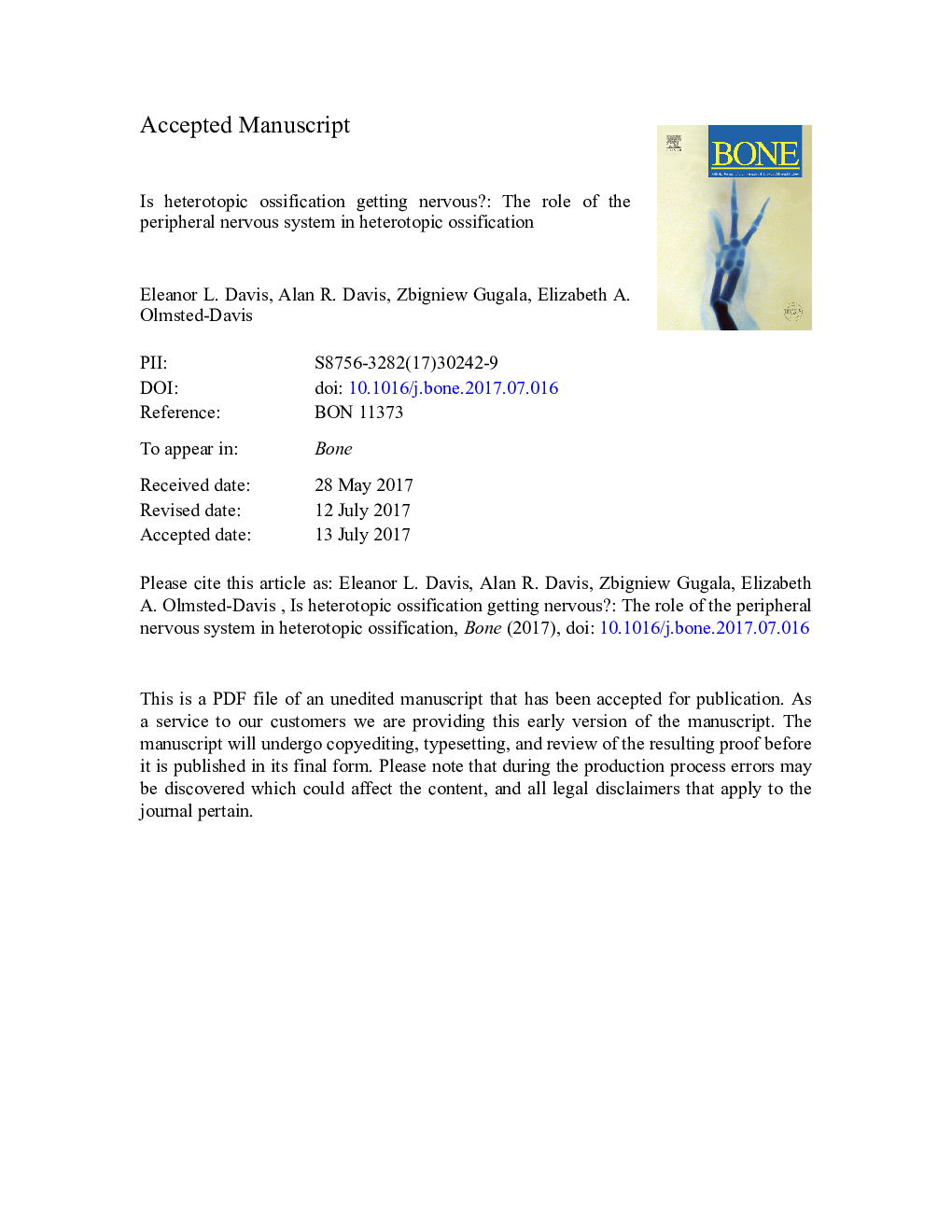| Article ID | Journal | Published Year | Pages | File Type |
|---|---|---|---|---|
| 8624998 | Bone | 2018 | 23 Pages |
Abstract
Overview of neurogenic heterotopic ossification (HO). Induction of HO is thought to occur from the release of BMPs in bone matrix that enter through the blood nerve barrier, presumably due to selective permeability associated with specific injuries. Once inside, BMP2 induces neuroinflammation through activation of the TRVP1 receptor leading to the release of substance P and CGRP. This leads to the recruitment and degranulation of mast cells outside the barrier that can eventually activate MMP9 and other proteins involved in matrix remodeling, which open the barrier and allow cells to exit through the circulation. Parallel to this process, cells within the endoneurium undergo early osteogenic differentiation and express factors necessary for extravasation to the site of HO. As they exit the barrier to be deposited, cells within the perineurium have been activated through the release of noradrenaline and subsequent binding to the β3-adrenergic receptor. These cells have an immediate expansion of their mitochondria and undergo robust uncoupled aerobic respiration similar to brown adipose. These cells start to migrate towards the site of HO, where their elevated oxygen consumption leads to both localized tissue hypoxia potentially necessary to support not only chondrogenesis, but also activation of HIF1α pathways that support new vessel formation. These cells express VEGFA, necessary for patterning the location of new vessels. The uncoupled respiration also appears to be able to coordinately regulate sensory nerves to maintain this process. However, when the inductive components, such as BMPs are gone, the process terminates, suggesting that they are transient in nature.238
Keywords
KLF4MMP9BNBHIF1αCGRPFOPVEGFATGFβfibrodysplasia ossificans progressivaTBAtMatrix metalloprotease 9Calcitonin gene-related proteinPDGFβDRGTRPV1dorsal root ganglionUcp1Nerve injuryHeterotopic ossificationNeuroinflammationepithelial to mesenchymal transitionTransforming Growth Factor BetaEMTBBBhypoxia-inducible factor 1 alphaKrüppel-like factor 4Vascular endothelial growth factor ASubstance PBlood-nerve barrierBlood-brain barrierBMPuncoupling protein 1Bone morphogenetic proteinbone morphogenetic protein 2transient receptor potential cation channel subfamily V member 1
Related Topics
Life Sciences
Biochemistry, Genetics and Molecular Biology
Developmental Biology
Authors
Eleanor L. Davis, Alan R. Davis, Zbigniew Gugala, Elizabeth A. Olmsted-Davis,
